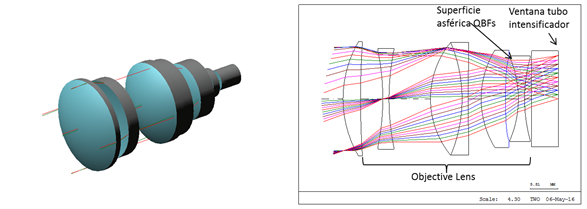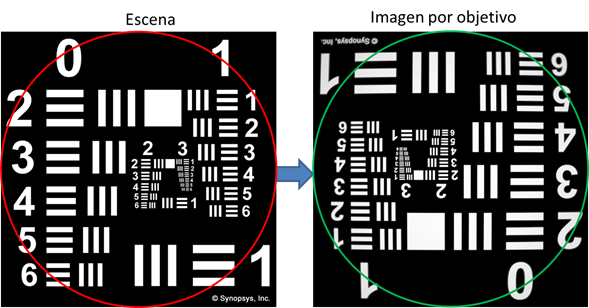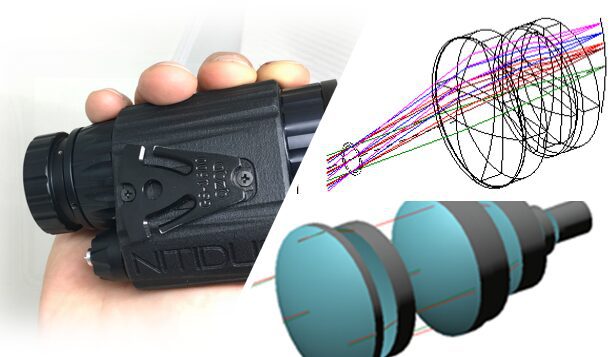State-of-the-art optics for Night Vision Systems
Currently, NVIS analog night vision system technology is very mature, so the latest 3rd Generation image intensifier tubes (IITs) have a very high resolution, typically around 74pl/mm. However, the optical systems attached to it usually have a lower resolution than this, so the final resolution of the assembly is limited by the optics and not by the tube itself.
New optics for high-end night vision systems
In its quest for excellence and within the framework of the COINCIDENT Program, ASE Optics has developed a 1x magnification monocular viewer with the objective of producing high-end binocular glasses. For this purpose, the optical subsystems (eyepiece and objective) have been designed using lenses that include aspherical surfaces based on the normalized polynomial base QBFs to improve not only the resolution and transmission of each of the subsystems, but also the distortion of the assembly. In addition, during optimization, a balance was made between weight, dimensions and overall optical quality taking into account functional and productivity criteria.

Figure 1. Optical schematic of lens
Figure 2 below shows the image simulation of the scene through the lens. The decrease in illumination and distortion in the extreme field is noticeable, but at the same time the image is sharp throughout the image crosshair.

In the particular case of the eyepiece, ASE Optics made the design for a large pupil emergence (25mm) taking into account the eyeball movement to better adjust the introduced QBF aspheric surface. In the image below, we show the optical scheme of the eyepiece with the simulation of the eye pupil.

Results: higher resolution, higher transmission
Both subsystems achieve resolutions greater than 74cl/mm in the focal plane and a transmission greater than 93%. Since they are designed to be coupled together, their distortion is compensated so that the distortion of the monocular is less than 4% for a total field of 40º. It is also noteworthy that the weight of these subsystems is reduced by about 15% compared to other commercial systems, which improves the ergonomics of the product and, therefore, the user experience.

